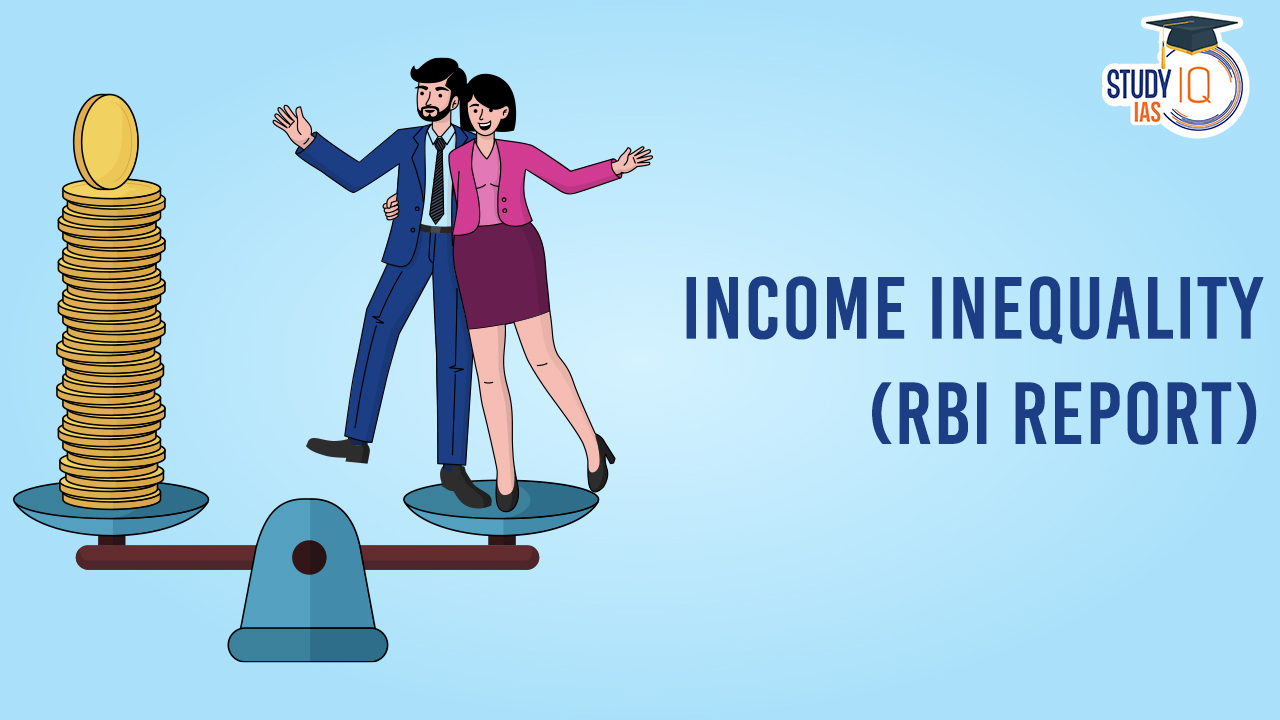Table of Contents
Context: Recently, the Economic Research Department of the State Bank of India report stated that income inequality has declined in India with a higher tax base and a shift in taxpayers from lower income to higher income tax bracket.
Key Highlights of the RBI Report
- Tax Bracket Shift (2013–14 to 2021–22): About 36.3% of taxpayers moved up from lower to higher income tax brackets, leading to an increase of 21.3% in additional income.
- Increase in Tax Returns for Rs 5 – 10 Lakh Income Group: The number of income tax returns (ITRs) filed by individuals earning between Rs 5 – 10 lakh rose by 295%, indicating a notable shift to higher income levels.
- Growth in ITRs for Rs 10 – 25 Lakh Income Group: There was a 291% increase in the number of ITRs filed by people with incomes between Rs 10 – 25 lakh, and the total number of income tax filers reached 7.4 crore in the assessment year 2023, up from 7 crore in the previous year.
- Female Tax Filers: Women constitute around 15% of individual tax filers, with states like Kerala, Tamil Nadu, Punjab, and West Bengal having a higher proportion of female filers.
- Top Taxpayers’ Income Share Changes: In the financial year 2014, the combined income of 23 individuals earning over Rs 100 crore was 1.64% of the total income. By FY21, although the number of such high earners increased to 136, their share of combined income decreased to 0.77%.
- Small Firms’ Growth: Around 19.5% of small firms have evolved into larger firms through integration into the MSME value chain.
- Increased Consumption Post-Pandemic: Consumption by the bottom 90% of the population increased by Rs 8.2 lakh crore after the pandemic.
- Food Ordering as an Economic Indicator: Data from food ordering platforms like Zomato is used as a case study to dispute claims of economic distress among the population.
- Shift in Vehicle Preference: There’s a noted decline in two-wheeler sales, with a trend of people moving towards purchasing four-wheelers.
- K-shaped recovery: Terming the claims of K-shaped recovery as “prejudiced” and “ill-concocted”, the report also cited the transition of small firms into larger firms and consumption trends being indicative of “vanishing inequality”.
We’re now on WhatsApp. Click to Join
What Is Income Inequality?
Income inequality is a term used to describe the disparity in the distribution of income among a population, where a higher degree of inequality indicates a more uneven distribution of income.
Measurement Of Income Inequality
- High vs. Median/Average Income Comparison
- This method involves contrasting the income of a large segment of high earners (like the top 10% of earners) with the national median or average income.
- Low vs. Median/Average Income Comparison
- Another approach is to compare the income of a lower-earning segment (such as the bottom 10%) against the median or average income.
- Tax Records Analysis of High Earners
- Researchers also analyse tax records of the highest income earners to gain insights into the wealthiest segments of society.
- Utilisation of the Gini Index
- The Gini Index, formulated by Italian statistician Corrado Gini in the early 1900s, is a popular tool for quantifying income inequality. It ranges from 0 to 100, where a higher score signifies greater income inequality, and a lower score indicates less inequality.
| What is K-shaped Recovery? |
Reasons for a K-shaped recovery
|
Causes Of Income Inequality
- Technological Progress Impact on Skill Premium: Technological advancements have increased the demand for highly educated individuals, as they are more adept at utilising new technologies.
- This results in an increasing concentration of jobs in either high-skill, high-wage roles or low-skill, low-wage roles.
- Role of Global Factors: Global factors like technological progress, globalisation, and fluctuating commodity prices significantly influence wage disparities and employment trends.
- Country-Specific Influences on Inequality: Inequality trends within countries are also shaped by unique national factors.
- These include aspects of economic development and stability, as well as domestic policies such as financial integration, redistributive fiscal measures, and the liberalisation and deregulation of labour and product markets.
Consequences Of Income Inequality
- High Income Inequality: Societies with high-income disparity often face economic instability and crises. On the contrary, more equitable societies usually experience prolonged periods of stable growth.
- Failure of Digital Solutions: The inequality in accessing digital resources results in the ineffectiveness of digital solutions intended to provide essential services, such as healthcare and education.
- Impact on Health and Social Issues: It contributes to various health and social challenges, including shorter life spans, higher rates of infant deaths, lower educational achievements, less social mobility, more violence, and increased mental health issues.
- Effect on Social Dynamics: It leads to weakened trust, solidarity, and social cohesion within a society, diminishing the collective will to work towards communal benefits.
- Reduced Productivity: An increase in the gap between wages is linked to a decrease in overall productivity.
Way Forward
- Intervention by governments is necessary when the free market fails to boost incomes.
- It is important to recognize government policies that contribute to income inequality.
- Implementing fiscal measures can help reduce income disparities.
- Implementing universal health care may aid in enhancing income equality.
- Enhancing the stability of social programs like Social Security and Medicaid can alleviate financial worries for many people.
- Improving access to educational opportunities can enhance socio-economic advancement.


 V Anantha Nageswaran's term as Chief Eco...
V Anantha Nageswaran's term as Chief Eco...
 Transformation of Koraput’s Tribal Foo...
Transformation of Koraput’s Tribal Foo...
 New Bat Coronavirus HKU5-CoV-2: Symptoms...
New Bat Coronavirus HKU5-CoV-2: Symptoms...





















